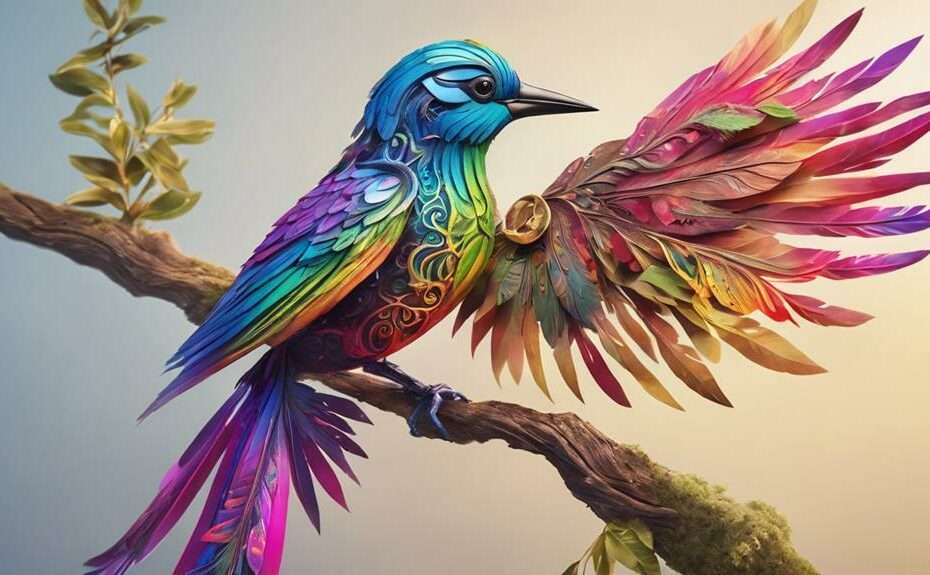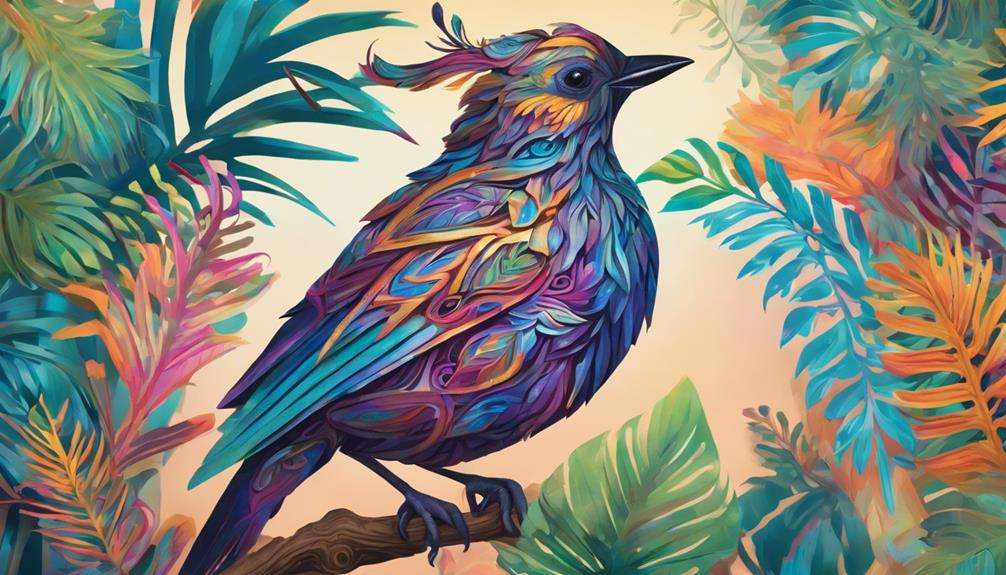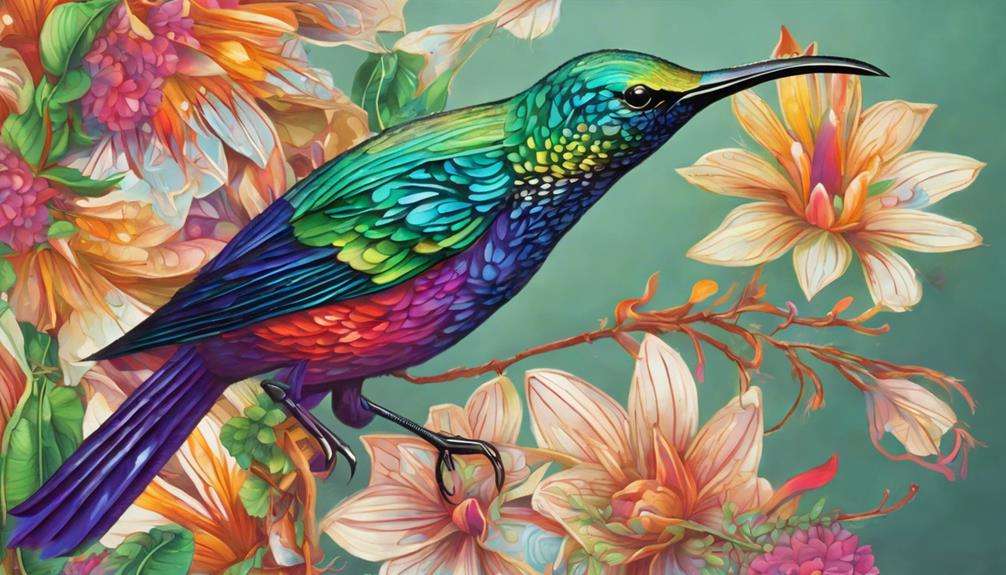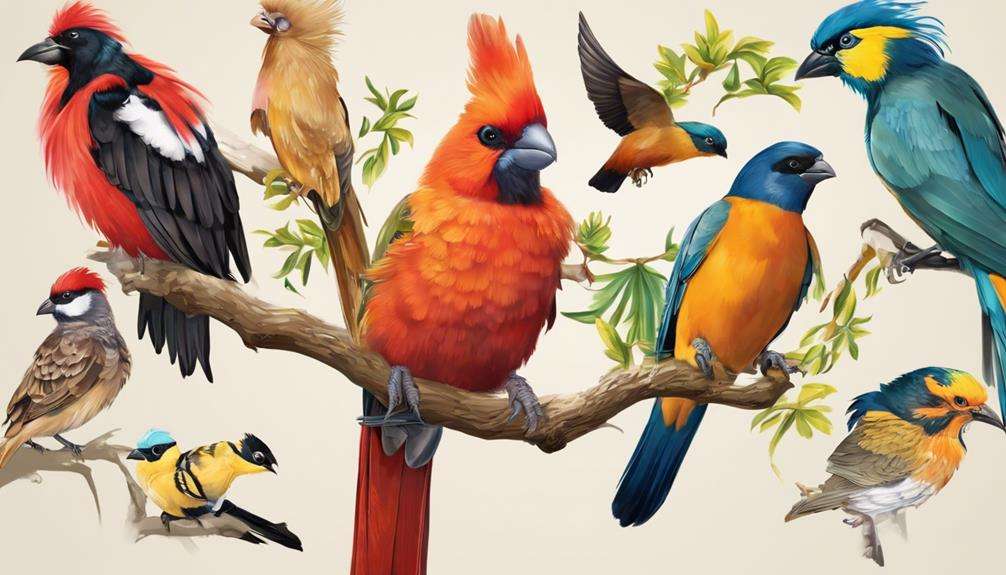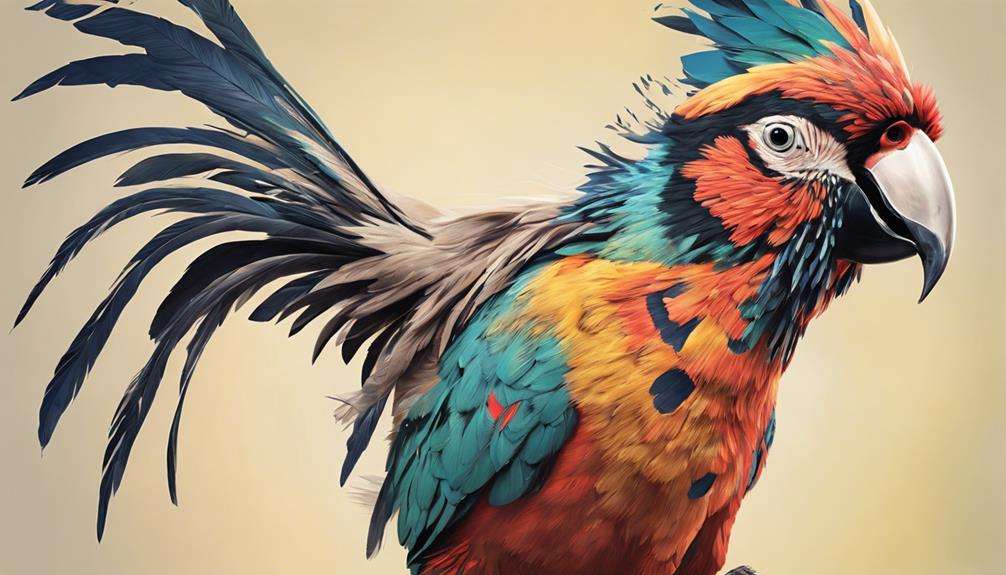Imagine a world where the skies are adorned with feathers of vibrant hues, where each flap of a wing reveals a spectacle of wonder and grace. These rare avian species possess extraordinary traits that defy the ordinary, drawing us into a domain where nature's creativity knows no bounds.
As you begin to explore the secrets held within the plumage of these unique birds, you'll uncover tales of adaptation, survival, and the intricate dance between life and evolution.
So, what mysteries lie hidden within the intricate tapestry of these avian wonders?
Key Takeaways
- Golden Pheasant: Males with vibrant colors and striking crests, females with subdued hues for camouflage.
- Cebu Flowerpecker: Critically endangered with less than 100 individuals, threatened by habitat loss and invasive species.
- New Caledonian Owlet-Nightjar: Less than 50 individuals, unique black plumage with grey stripes, vital conservation efforts needed.
- Kakapo: Only around 200 individuals, known for unique mating rituals, conservation crucial for protection and population increase.
Golden Pheasant (Chrysolophus Pictus)
The Golden Pheasant, native to the Western forests of China, boasts vibrant colors and a distinctive golden crest. These birds are truly unique in their appearance, with males displaying a combination of deep orange, red, yellow, and black plumage, while females exhibit more subdued hues for camouflage. The striking golden crest on their heads adds to their majestic presence, making them a sight to behold in their natural habitat.
In Chinese culture, Golden Pheasants are revered as symbols of luck and prosperity, further enhancing their significance. Despite their relatively small size and limited flying ability compared to other bird species, these pheasants navigate the forest floor with agility, utilizing their omnivorous diet to sustain themselves. Seeds, grains, fruits, and insects make up the varied menu of these beautiful birds, showcasing their adaptability and resourcefulness in the wild. Observing a Golden Pheasant in its natural environment is a proof of the intricate beauty and resilience of avian life in China's forests.
Cebu Flowerpecker
Originating from the Cebu Islands in the Philippines, the Cebu Flowerpecker stands out as an intriguing avian species with a unique story of rediscovery. Once believed to be extinct, this bird species, with its vibrant coloration and small size, was rediscovered in 1992, sparking hope for its survival. However, the Cebu Flowerpecker remains critically endangered, with only an estimated 85 to 105 individuals left in the wild.
Conservation efforts play a crucial role in safeguarding the future of the Cebu Flowerpecker. Due to habitat loss and fragmentation, as well as potential threats from invasive species, the survival of this species hangs in the balance. Efforts to protect and restore its habitat are essential to vital the long-term viability of the remaining population.
As one of the rarest birds in the Philippines, the Cebu Flowerpecker serves as a poignant reminder of the fragility of biodiversity and the urgent need for conservation actions to preserve endangered species like itself.
New Caledonian Owlet-Nightjar
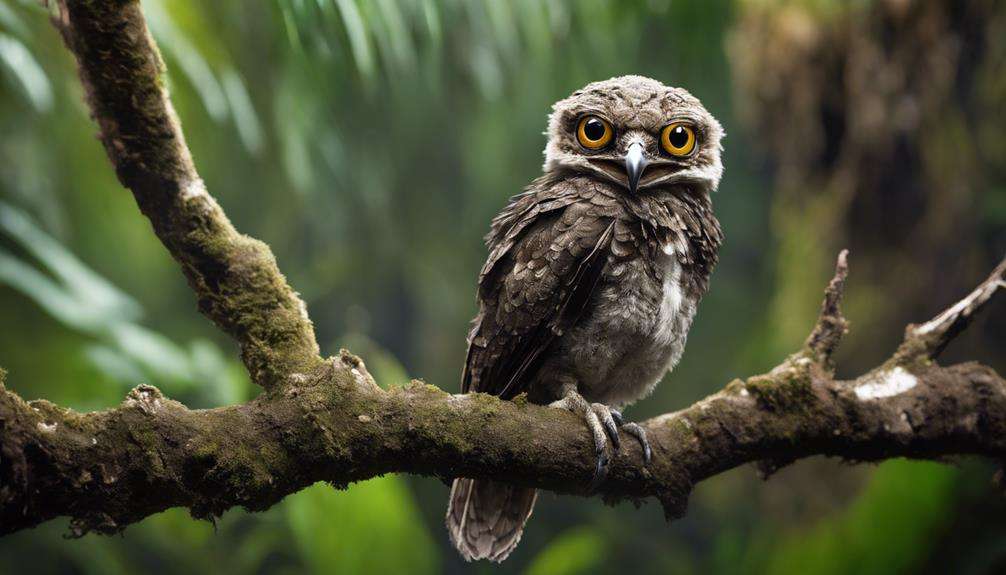
The New Caledonian Owlet-Nightjar, a rare avian species with extraordinary traits, presents unique physical features that include a cryptic appearance and grey stripes.
Its elusive nature and limited population of fewer than 50 individuals make studying and conserving this bird challenging.
Preservation efforts are pivotal to prevent the extinction of this enigmatic species and safeguard its place in avian biodiversity.
Unique Physical Features
Indisputably, a mysterious black bird with grey stripes, the New Caledonian Owlet-Nightjar showcases extraordinary physical features that captivate researchers and conservationists alike.
This critically essential endangered species, with its unique appearance, stands out in the avian world. The black plumage, adorned with striking grey stripes, sets it apart from other birds. Its small size and cryptic coloration aid in camouflage, allowing it to blend seamlessly into its forest habitat.
The New Caledonian Owlet-Nightjar's large eyes and wide beak are specialized adaptations for its nocturnal hunting behavior. These physical characteristics, combined with its rarity, make studying and protecting this species vital for understanding the diversity of avian life and conserving unique wildlife.
Habits and Behavior
With its enigmatic demeanor and nocturnal tendencies, the New Caledonian Owlet-Nightjar exhibits a complex array of habits and behaviors that intrigue researchers seeking to unravel its elusive nature.
This mysterious black bird with grey stripes is known for its secretive behavior, making it challenging to study in its natural habitat.
The New Caledonian Owlet-Nightjar's behavior is closely tied to the dense forests of New Caledonia, which are facing threats from deforestation and habitat loss.
The lack of conservation efforts puts this unique species at risk of extinction, with less than 50 individuals left in the wild.
Understanding the behavior patterns of this rare bird is essential for developing effective conservation strategies to safeguard its survival in the face of environmental challenges.
Conservation Efforts
Efforts to protect the New Caledonian Owlet-Nightjar, a rare bird species with less than 50 individuals remaining, are urgently required to prevent its extinction.
The lack of specific conservation initiatives has left this species vulnerable to the threats it faces, primarily habitat loss and potential predation due to its small population size.
Urgent conservation measures should be implemented to safeguard the future of this mysterious bird with black plumage and grey stripes.
Raising awareness about the New Caledonian Owlet-Nightjar's precarious situation and establishing conservation programs are critical steps in ensuring the survival of this unique avian species.
Without immediate action, the New Caledonian Owlet-Nightjar may succumb to extinction, highlighting the critical need for focused conservation efforts.
Imperial Amazon Parrot
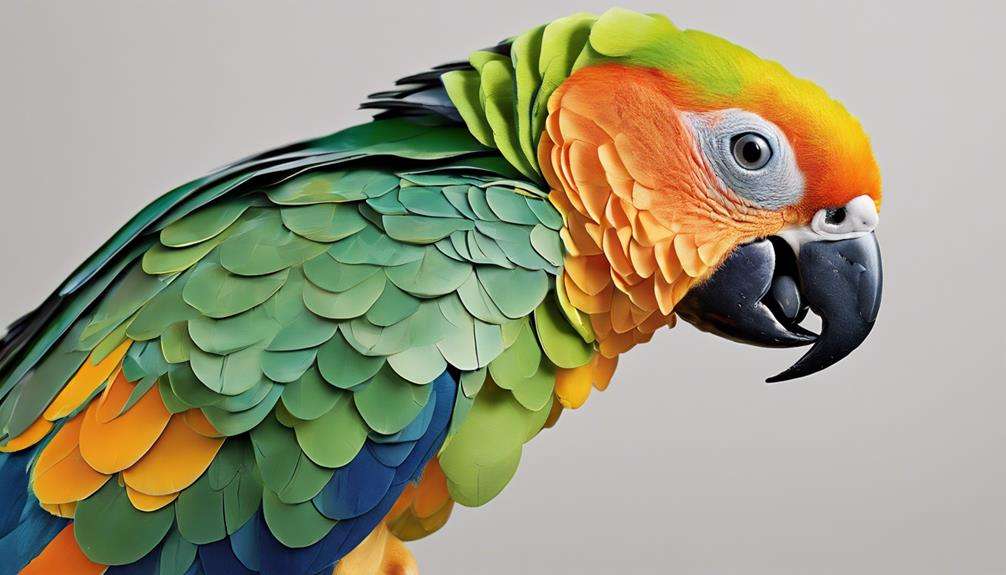
The Imperial Amazon Parrot, a species exclusive to Dominica with a dwindling population of around 50 mature individuals, faces critical endangerment due to habitat loss and natural disasters. This parrot species showcases sensational plumage, characterized by vibrant hues that blend seamlessly with the lush vegetation of its habitat, aiding in its camouflage and survival.
Conservation efforts are imperative to safeguard the Imperial Amazon Parrot from extinction. Urgently needed initiatives must address the escalating threats posed by habitat destruction and the catastrophic impacts of events like Hurricane Maria. The unique coloration and limited population size of the Imperial Amazon Parrot underscore the pressing necessity for dedicated conservation actions.
With a mere 50 adults remaining in the wild, immediate steps are essential to assure the species' continued existence. The distinctiveness of the Imperial Amazon Parrot, coupled with its perilously low numbers, accentuates the urgency of conservation measures to protect this critically endangered avian species.
Blue-eyed Ground-Dove
The Blue-eyed Ground-Dove, a species endemic to Brazil's Cerrado region, boasts a remarkable feature with its sapphire blue eyes that contrast vividly against the male's magenta head. This unique eye coloration serves as a distinguishing trait of the species.
However, challenges such as habitat loss have pushed this ground-dove to a critically endangered status, prompting the need for focused conservation efforts to safeguard its future.
Unique Eye Color
Nestled within the expansive Brazilian Cerrado region, the Blue-eyed Ground-Dove showcases a distinctive feature with its mesmerizing sapphire blue eyes. These striking eyes are particularly notable in male doves, complementing their magenta heads.
In contrast, female Blue-eyed Ground-Doves exhibit a paler coloration overall. The vivid blue hue of their eyes is a rare sight in the avian world, adding to the allure of this species.
Unfortunately, the critical endangerment facing these doves is exacerbated by habitat loss in the Cerrado region. Despite the alluring appearance of their eyes, research on the breeding behaviors and diet of the Blue-eyed Ground-Dove remains limited.
Understanding more about these unique traits could be vital for conservation efforts aimed at preserving this stunning avian species.
Habitat and Diet
Found exclusively in Brazil's Cerrado region, the Blue-eyed Ground-Dove's habitat and diet present intriguing aspects that are pivotal for understanding and conserving this critically endangered species.
Habitat loss in the Cerrado region has greatly impacted the population of these doves. The blue eyes of the males are a distinctive feature, complementing their magenta heads. Females, on the other hand, have a more subdued appearance. Despite the striking physical characteristics, little is known about their breeding habits and diet.
Understanding their diet is vital for their survival, as it directly impacts their reproductive success. Conservation efforts must focus on preserving their habitat and identifying the specific dietary needs of the Blue-eyed Ground-Dove to guarantee their continued existence in the wild.
Conservation Efforts
Amidst the challenges posed by habitat loss and limited knowledge of their dietary habits, conservation efforts for the Blue-eyed Ground-Dove necessitate a strategic approach focused on preserving their unique ecosystem and enhancing understanding of their nutritional requirements.
As an endemic species exclusively found in Brazil's Cerrado region, the Blue-eyed Ground-Dove faces a critical endangerment due to habitat loss in its limited geographic range. To guarantee the survival of this species with its striking magenta head and sapphire blue eyes, conservation initiatives must prioritize the protection and restoration of the Cerrado's natural habitats.
Additionally, efforts should be directed towards conducting further research to fill the gaps in understanding the breeding habits and diet of these rare doves, enabling more targeted conservation strategies based on thorough scientific knowledge.
Kakapo (Strigops Habroptilus)
With only around 200 known individuals, the Kakapo (Strigops Habroptilus) stands as a remarkable flightless parrot species native to New Zealand. These nocturnal birds are easily recognizable by their vibrant green plumage and are known for their unique mating rituals. Unfortunately, the Kakapo is critically endangered primarily due to invasive species like rats and habitat destruction.
Conservation efforts for the Kakapo are essential in preventing their extinction. Organizations and researchers are working tirelessly to protect and increase the population of these extraordinary parrots. Due to their friendly and curious nature, Kakapos have garnered significant attention from conservationists and bird enthusiasts alike. Despite their current endangered status, there's hope that with dedicated conservation initiatives, the Kakapo population can be stabilized and even expanded.
Rufous-Headed Hornbill (Rhabdotorrhinus Waldeni)
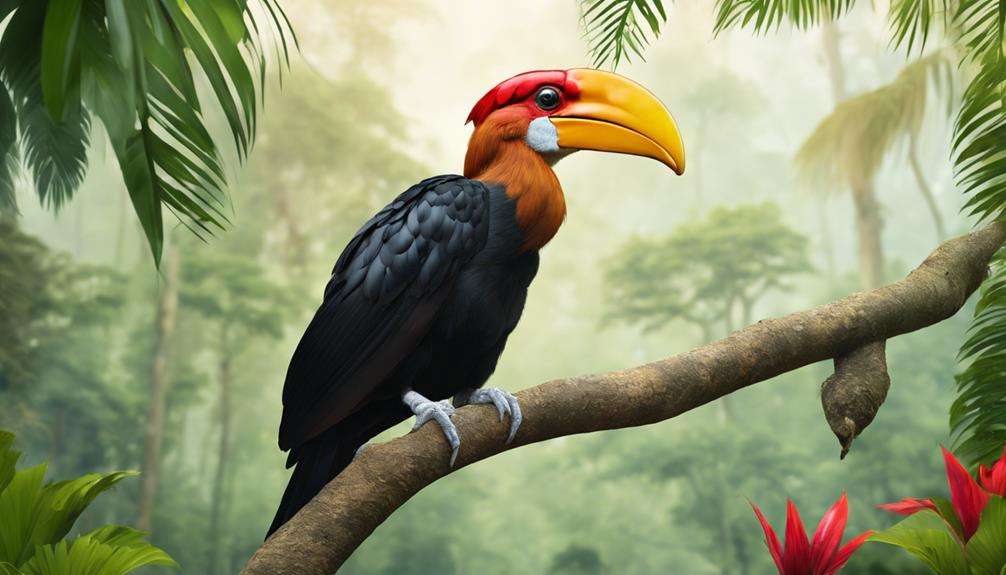
Observing the Rufous-Headed Hornbill in its natural rainforest habitat reveals a strikingly unique bird with its rufous-colored head and distinctive hornbill characteristics. This species, native to the Philippine islands, faces a critical endangerment status primarily due to habitat loss. With only a few individuals remaining in the wild, urgent conservation efforts are essential to safeguard its existence.
The striking appearance of the Rufous-Headed Hornbill makes it a notable avian species, attracting attention to the need for preservation. Its rufous head, combined with typical hornbill features, sets it apart in the avian world. The alarming population decline underlines the necessity for immediate and effective conservation actions to vital the survival of this magnificent bird.
Protecting the natural habitat of the Rufous-Headed Hornbill is crucial in combating the threats posed to its population. Conservation initiatives play a vital role in maintaining the delicate balance required for the continued existence of this endangered species.
Frequently Asked Questions
What Is the Rarest Species of Bird?
The rarest species of bird is the Stresemanns Bristlefront, with only one individual left. It is imperative to preserve these unique avian beings, as they showcase extraordinary traits in their unusual habitats and distinctive plumage.
What's the Most Unique Bird?
When you consider the most unique bird, think about its unusual plumage, uncommon behaviors, distinctive habitats, and extraordinary adaptations. Each aspect adds to the marvel of these avian wonders, showcasing nature's creativity.
What Is the Mysterious Bird in the World?
You've asked about the most mysterious bird in the world. It's the New Caledonian Owlet-Nightjar. With its unusual features, unexplained behaviors, remarkable sightings, and enigmatic nature, this bird captivates and puzzles researchers and conservationists alike.
What Is the #1 Most Endangered Bird?
You must know the #1 most endangered bird, the Spix's Macaw. Its survival teeters on a delicate balance due to habitat destruction and illegal trapping. Conservation efforts, including captive breeding, are essential for species recovery.
Conclusion
As you contemplate the rare avian species with extraordinary traits, remember that these majestic creatures aren't just birds, but ambassadors of uniqueness in the bird kingdom.
Their vibrant colors, intricate dances, and alluring behaviors remind us of the importance of conservation efforts in preserving their habitats.
So, next time you see a Golden Pheasant or a Blue-eyed Ground-Dove, take a moment to appreciate their exceptional beauty and the wonders of the natural world.
